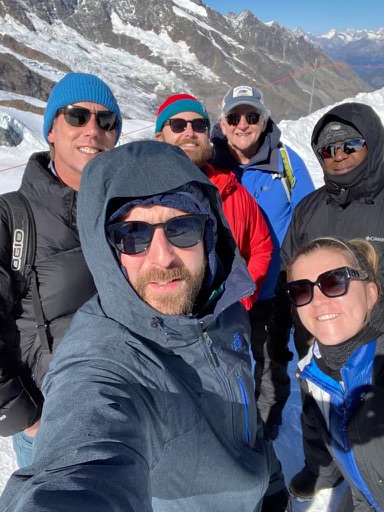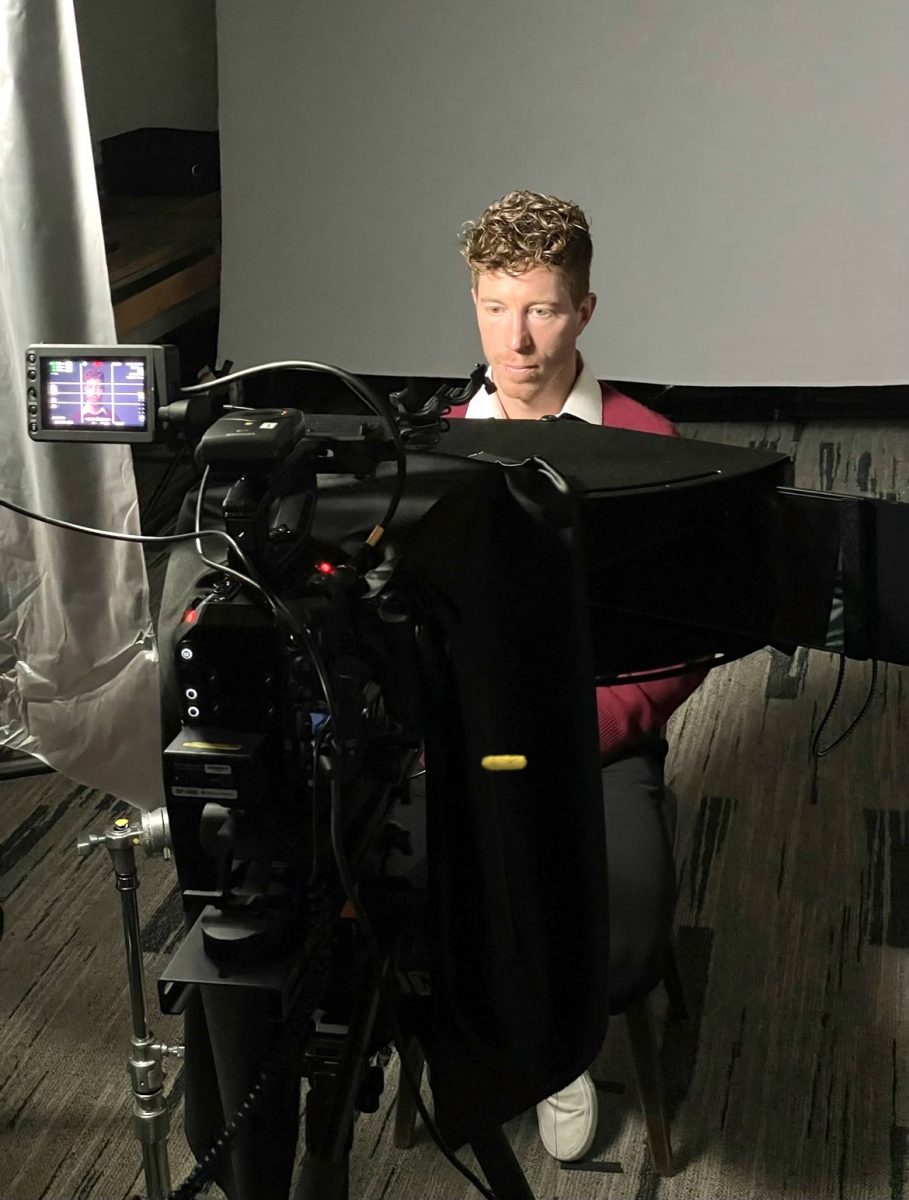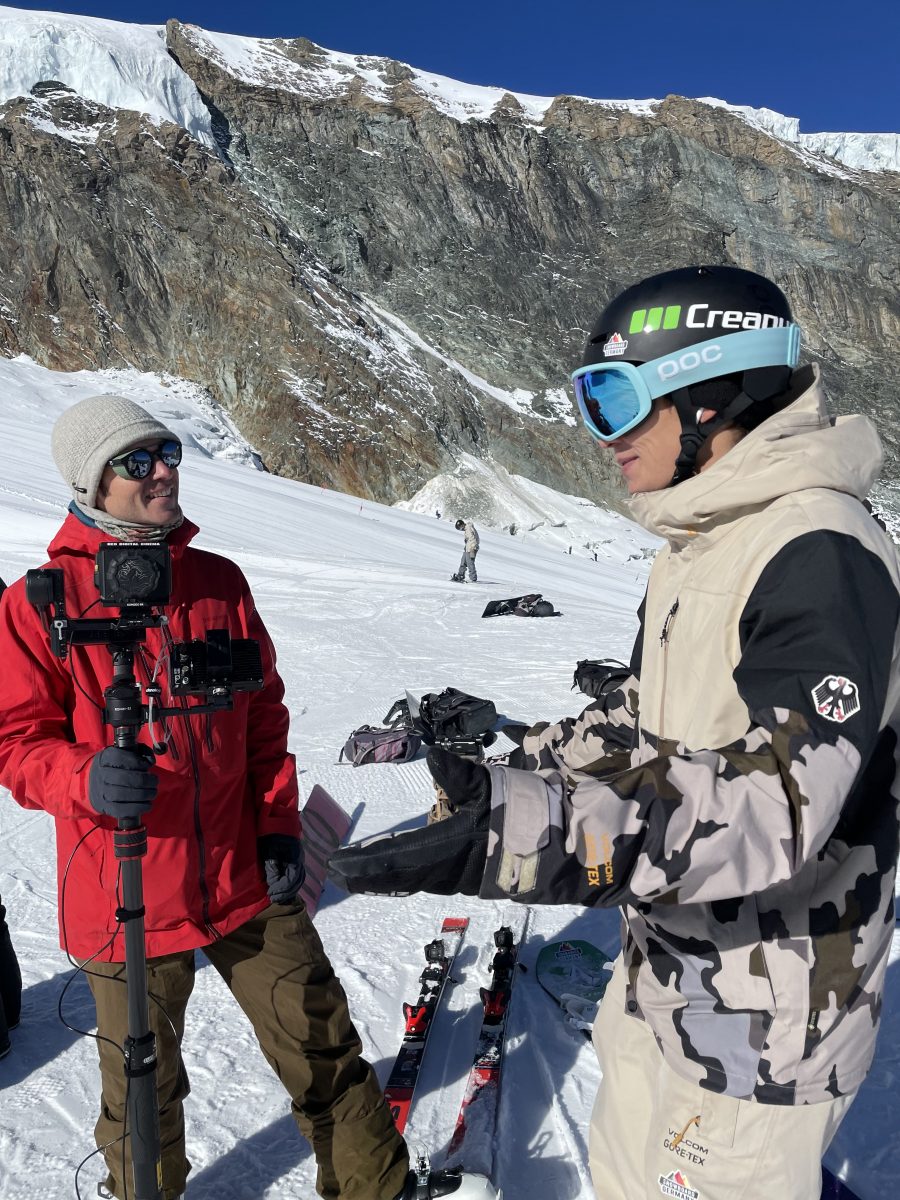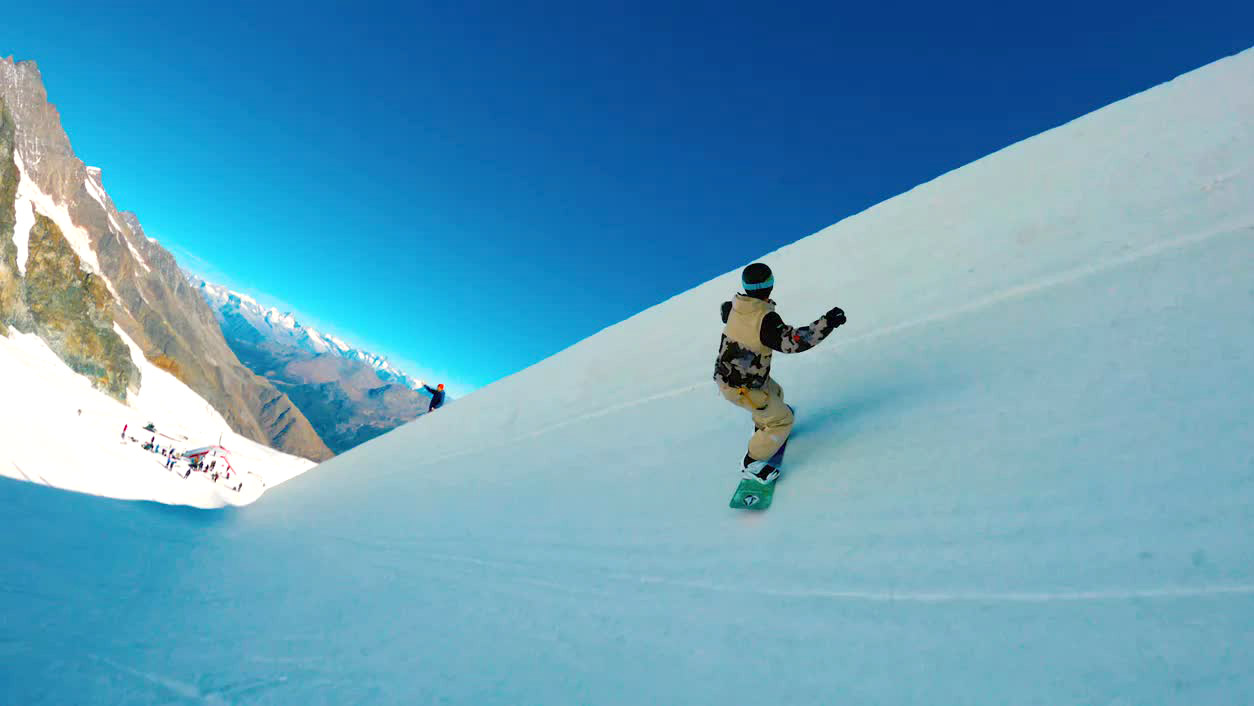How the New York Times visualized the mental struggles Olympians face against fear
There’s a new generation of athletes on Olympic podiums — but they might not be the fearless daredevils we imagine them to be.
Ahead of the 2022 Winter Olympics in Beijing, a team of six New York Times reporters set out to answer the question: does fear play a role in the minds of Olympians?
In Saas-Fee, a glacial resort village in the Swiss Alps, winter athletes flock each October to train. The NYT team traveled there for 10 days in October of 2021 to uncover the inner workings of the minds of winter sports athletes — many of whom perform some of the most terrifying feats of athleticism on a day-to-day basis.
Storybench sat down with Joe Ward to discuss how the five-part series ‘Athletes and their Olympic-level fears’ developed, and the technical aspects of the story ‘When You Can’t Tell the Snow From the Sky.’
What was the motivation behind creating a series focusing on the fear Olympians face?
Joe Ward: Bedel [Saget] and I were in Beijing for the Summer Olympics in 2008, and I interviewed an athlete who was on the US team [for 10-meter platform diving] and, you know, I was asking him what it’s like up there. And I said, ‘do you ever get scared?’ and he said, ‘Oh, we’re scared all the time. It’s really high. We’re scared all the time.’ I said, ‘but you do this every day.’ He goes, ‘Yeah, we’re scared every time.’ I didn’t do anything with it then other than just include it [in that story], but I always had it in the back of my mind that it would be interesting to do something on fear.
In the Winter Olympics actually, there’s much more of that. So many of them can be scary because there are high speeds, there are sharp skis, sharp skates, they’re doing flips in the air and, you know, there’s a lot of injury.
What was interesting interviewing them is that no one has sort of ever asked them these questions. I just feel like we touched on something that they really wanted to talk about. Because, you know, they would admit that they don’t want to necessarily let their opponent know they’re afraid or things like that, but I feel like we sort of really struck something that they really wanted to talk about.

Front row; Noah Throop, Emily Rhyne.
What approach did you take during interviews to make the athletes feel comfortable enough to talk about their fear and their mental state?
JW: We thought it was going to be difficult. We thought we were going to have to drag it out of them. We didn’t give them any of the questions, but a lot of them knew that we were going to be talking about fear and so, I think when they got there, they were kind of ready to talk about it.
John Branch, who had done most of the interviews, basically started with a very basic question, ‘does fear play a role in your sport?’ And to a person who was like, ‘oh, yeah,’ that sort of just opened floodgates for them.
The whole Simone Biles thing really, I think, helped these other athletes to open up. More than one of them talked about Simone Biles and said, you know, ‘really courageous about what she did.’ Part of me felt like it gave them permission to talk about this.
What was the decision-making behind styling the individual interview shots?
JW: We wanted the athlete not to be looking off-camera a little bit, which is often the way you see interviews, where they’re kind of at a slight angle. We wanted them to look right into the camera lens. We thought that would be really compelling because you know, they’re telling us their deepest, darkest secrets here and we want them to be looking right at the viewer. But that’s really difficult to say to somebody ‘okay, I’m over here asking you a question, but could you answer me looking into the lens?’ It’s very uncomfortable and it really doesn’t work that well.
So this contraption [called EyeDirect] actually let them see John in the lens. When they’re looking directly into the camera lens, John and the person are looking directly at each other, which is impossible in a normal setup, you know, John would have to be slightly to the side or above the camera or below the camera. Basically, they’re looking into this mirror setup, which the lens is hidden behind, and I think it really helped viewers sort of see inside what these people are thinking.

We wanted there to be this eye contact where it looked like the athlete was talking directly to the viewer. I think it really helped this piece a lot. I really think that there was an intimacy there that was conveyed.
What about your initial plan for this story, if anything, changed once you got to the mountain in Saas-Fee?
JW: Very often you get to these places, and it’s not anything the way you expected. [However], with these sports there’s a lot of video online, so you know what a halfpipe will look like, you know what aerials will look like, you know those kinds of things. You can plan it in your head, like, ‘wouldn’t it be great to have this shot? This would be nice to use a drone for this,’ you know, so we had some drone shots and some slow motion and some real time video.
JW: The other thing that was interesting that we could use, which was helpful — the mountain itself had a lot of videographers on there. All these athletes are training, right, so they want to be able to see what they’re doing. Instead of having to bring their own video people with them, the mountain supplies that, and basically the mountain has videographers all over the place. They basically said, ‘yeah, you can use whatever you need from us,’ so that was a great help.
How did you find the athlete to wear the GoPro, and how did you ensure you got quality footage?
JW: As we were interviewing these people you could get a sense that this might be a person we might want to zero in on if they either had a good story or they were very good on camera.
This generation of athlete is very used to wearing [GoPros]. They put a lot of their stuff on Instagram, and YouTube, and places like that. They’re very used to it, so it’s not really a big ask for them to do that. When we did the aerialist he was like ‘sure, I’d be happy to, we do it all the time.’
That kind of footage is always really compelling because you are getting it pretty much from the perspective of the athlete.
There was one part of this piece where a snowboarder was trying out a new trick. There was a media day where you could talk to some athletes, and we started talking to him. We started saying, ‘Hey, we’re doing this thing on fear,’ and he goes ‘oh, yeah, so I’m trying a new trick. It’s kind of scary.’ John Branch and I look at each other like ‘this could be good.’
We followed him for three or four days as he was trying the new trick. He never actually was able to land it there. He crashed a lot, he was practicing a lot and practicing in the bag, and all those different kinds of things and every day he would talk to us about what was going wrong and the fear he was having to get over.

This is a weather-centered story. Did the weather cooperate the way you hoped while you were in Saas-Fee?
JW: The weather was good for a lot of these shots. We were able to sort of overlay as you see in the beginning of that piece where we sort of overlay the blue sky with the cloudy sky.
There was a day for instance, where it actually snowed too much for them to go. There was a day that was way too windy, which was actually pretty good for us. They didn’t go but we were able to talk to them about that. The guy who was doing the new trick, he was like ‘I can’t do it today, it’s too scary to do it with this much wind.’
So it was really interesting to get and [to answer the question] ‘are these people like us and are afraid of this stuff or are they just daredevils and they’re just wired differently than we are?’ The truth was, they do this one thing that scared them, but the rest of the time they’re like us, they’re afraid of things, and they’re afraid of this too.
Did you have any concerns about accessibility when it came to the visuals in this story?
JW: There was a lot of discussion, a lot of trial and error on how it would look — what colors we would use, how do we adjust the toning of the images? There was a lot of discussion about those kinds of things. Not the least of which is ‘what does it look like on a phone?’
They look so great on a big monitor, right? You wish everybody could see it on a big screen, but you know that most people are going to be looking at it on their tiny phones, so you have to really design for that.
You go out to this great — this amazing glacier in Switzerland. You get this awesome footage, and you just want to show off the footage and show people what it’s like there. You want them to see it as big as possible, but mostly they’re seeing it on their phone.
What else is crucial to understanding the way this story developed?
JW: We made a fairly big commitment to send a group of people to Switzerland and like, we were going not knowing if anybody would talk to us about this. But I think what we found, what we were really excited about after going to Switzerland was that the athletes were so open about it. They, you know, really to a person, had some really serious fears in the thing they do for a living.
The rest of us, [there] might be a couple of things that might scare us in what we do for a living but this is what they do, and it scares them every day. That was, it was really sort of rewarding to know that we were going to be able to tell this story.





